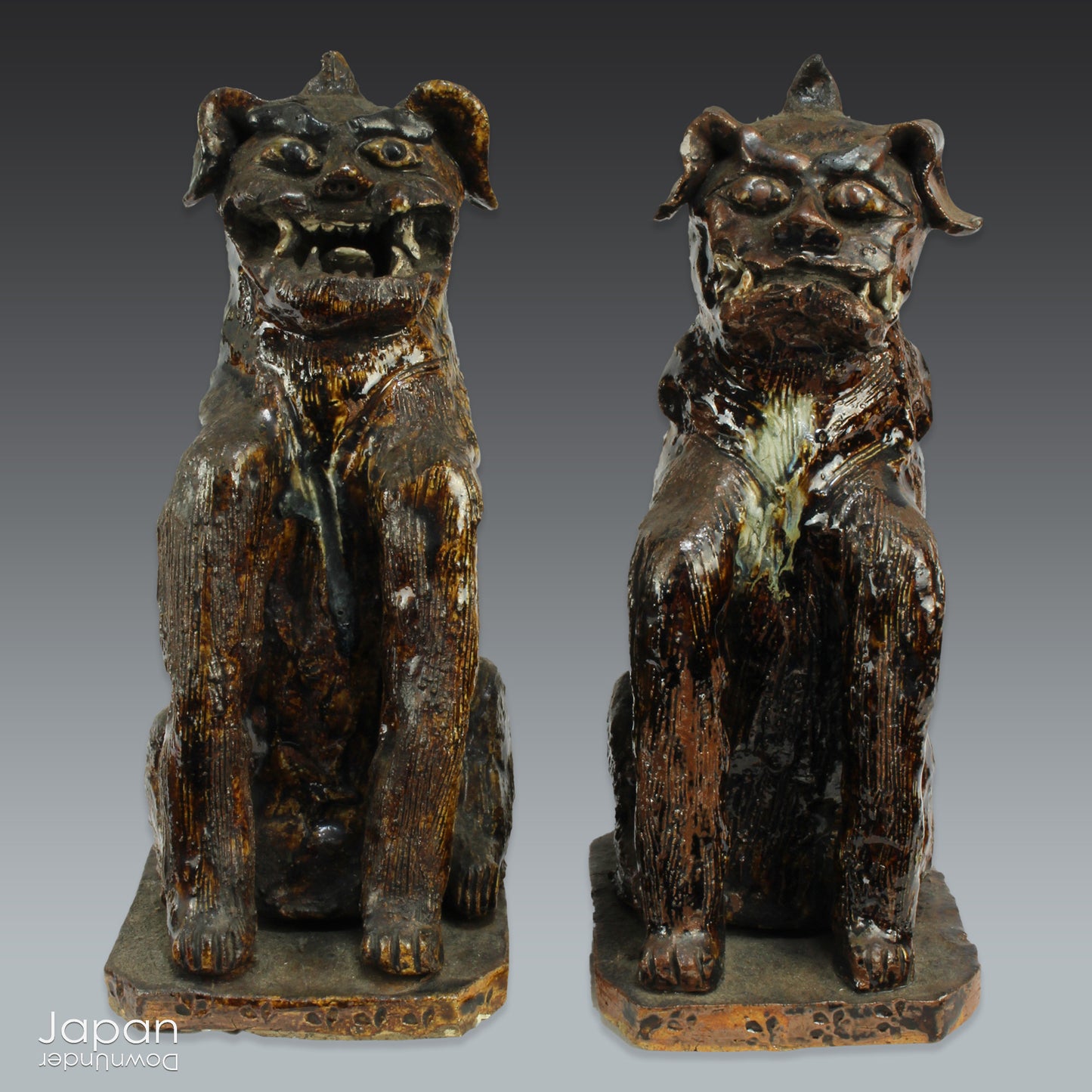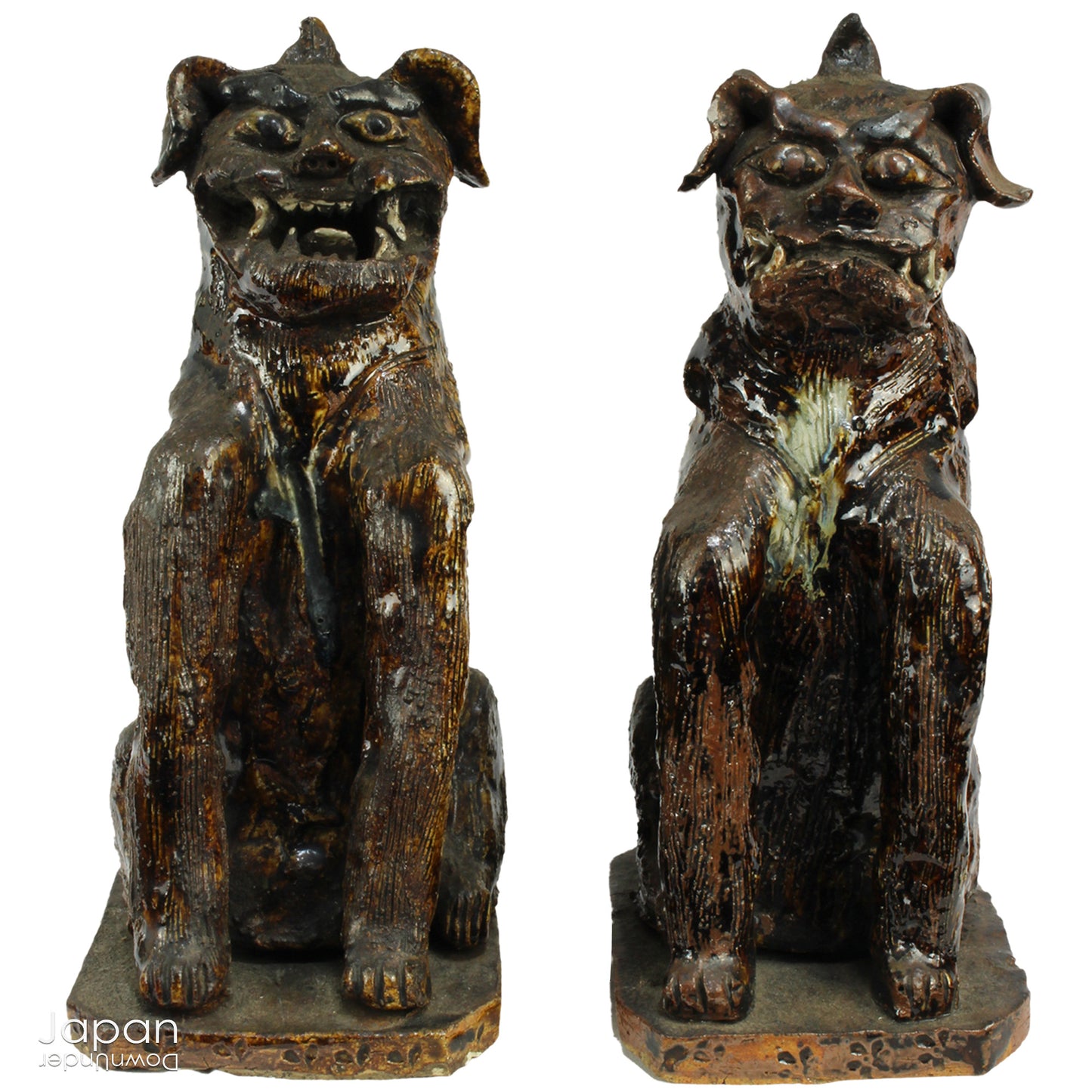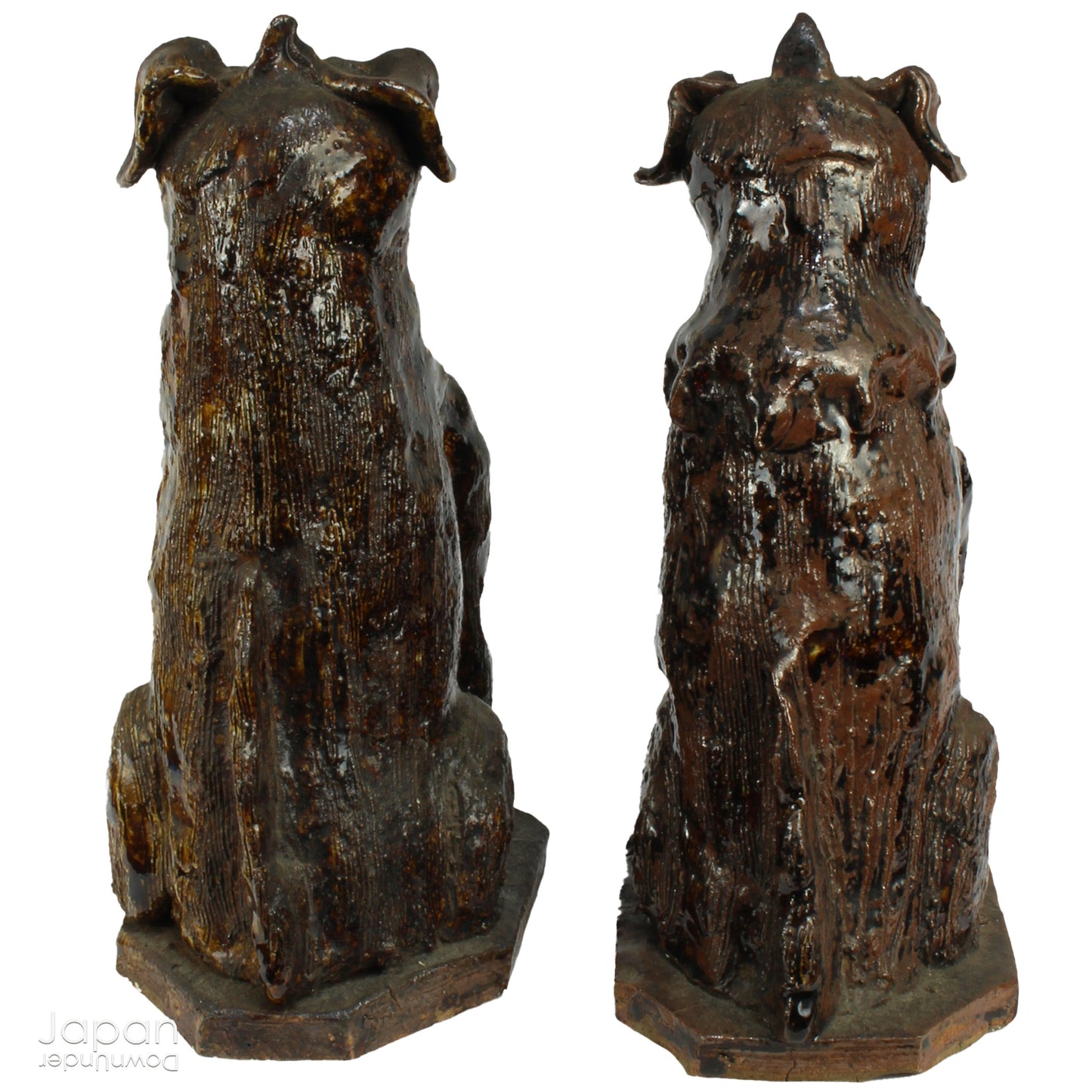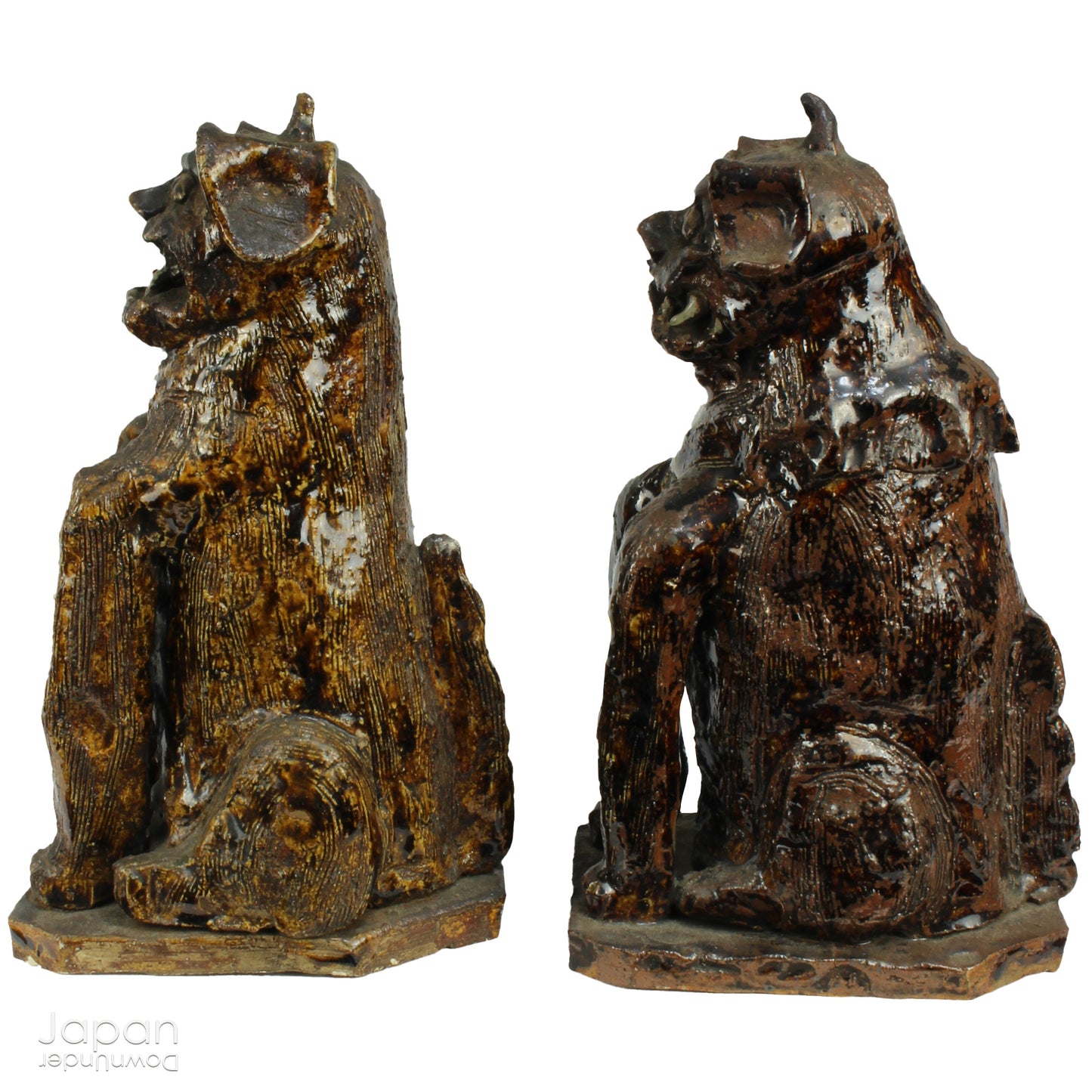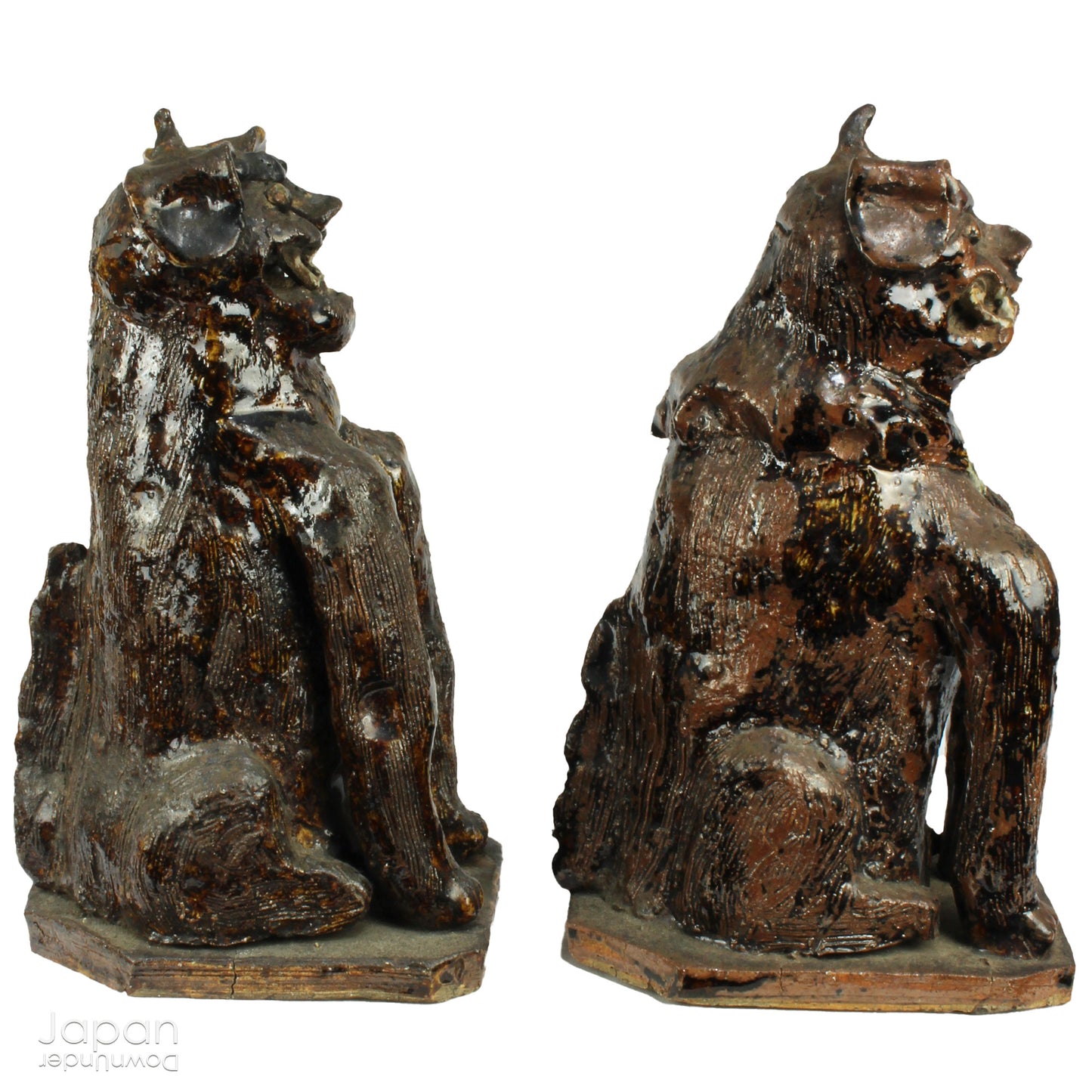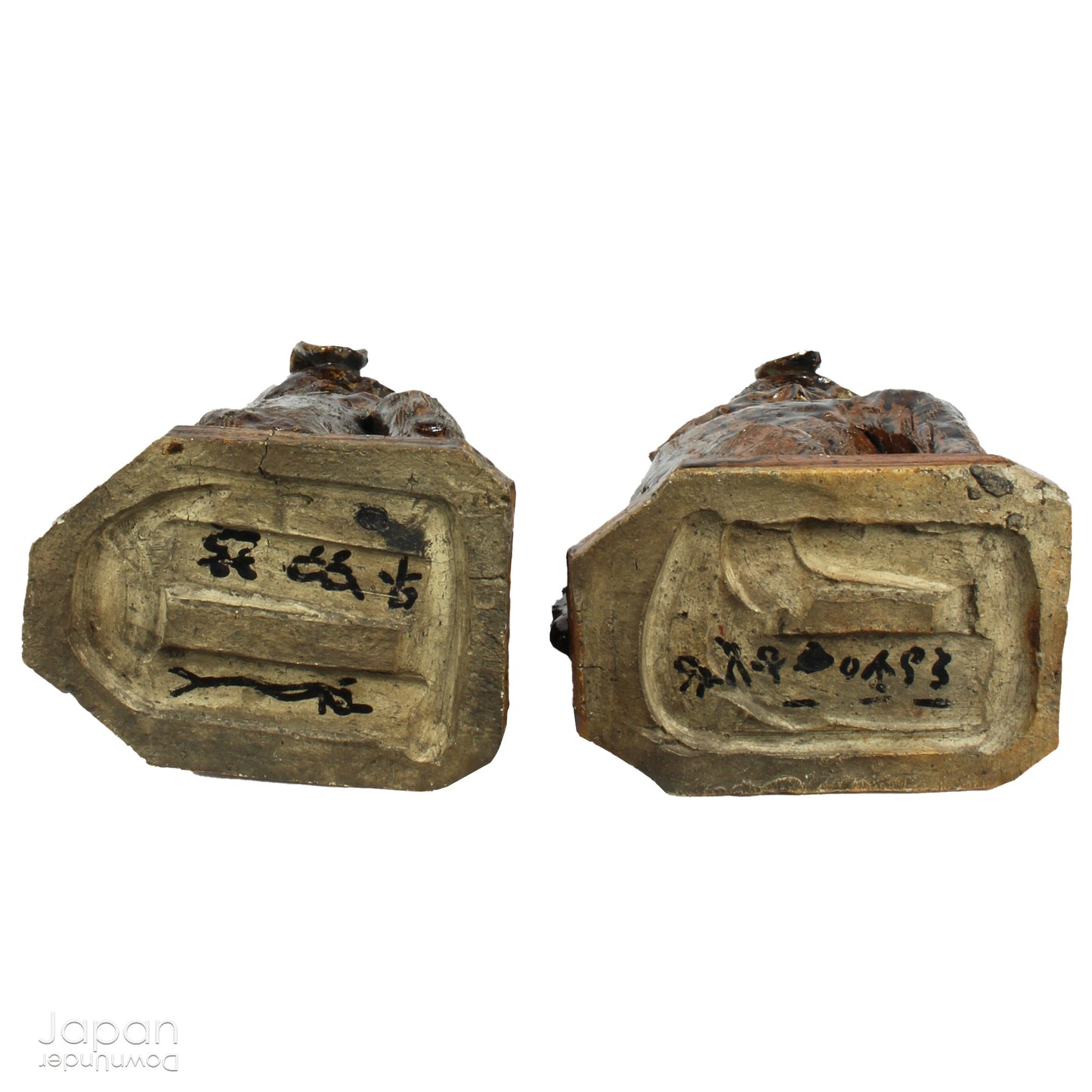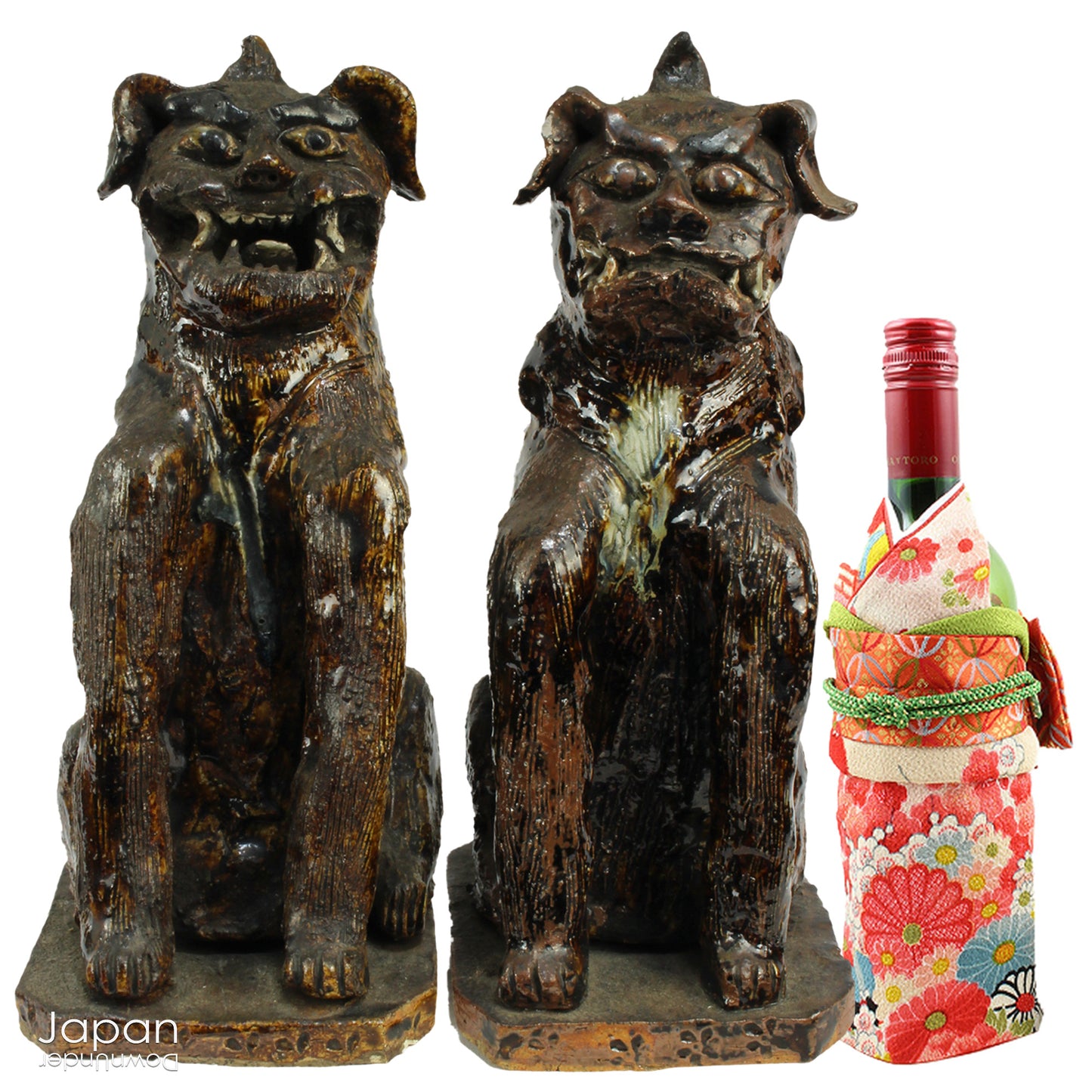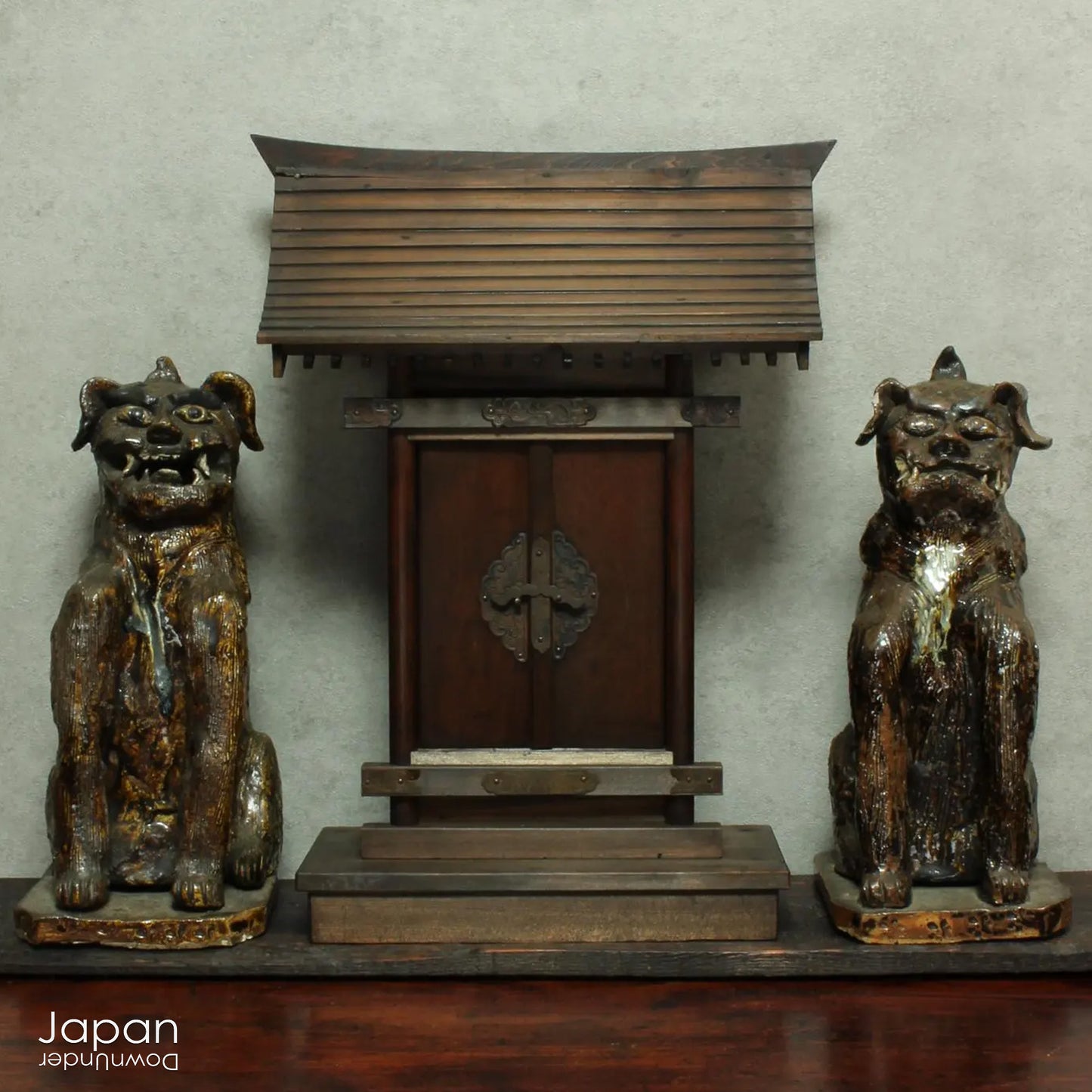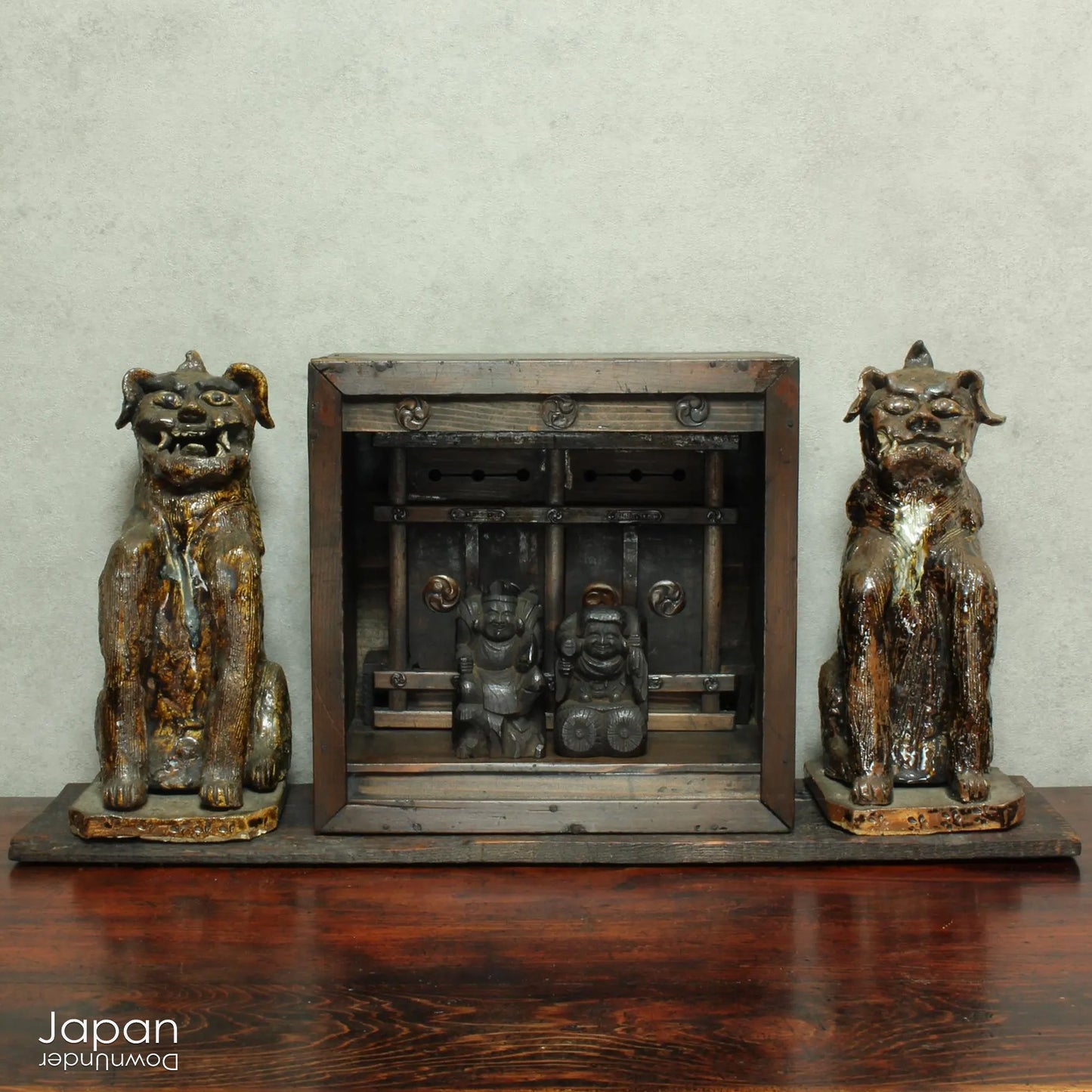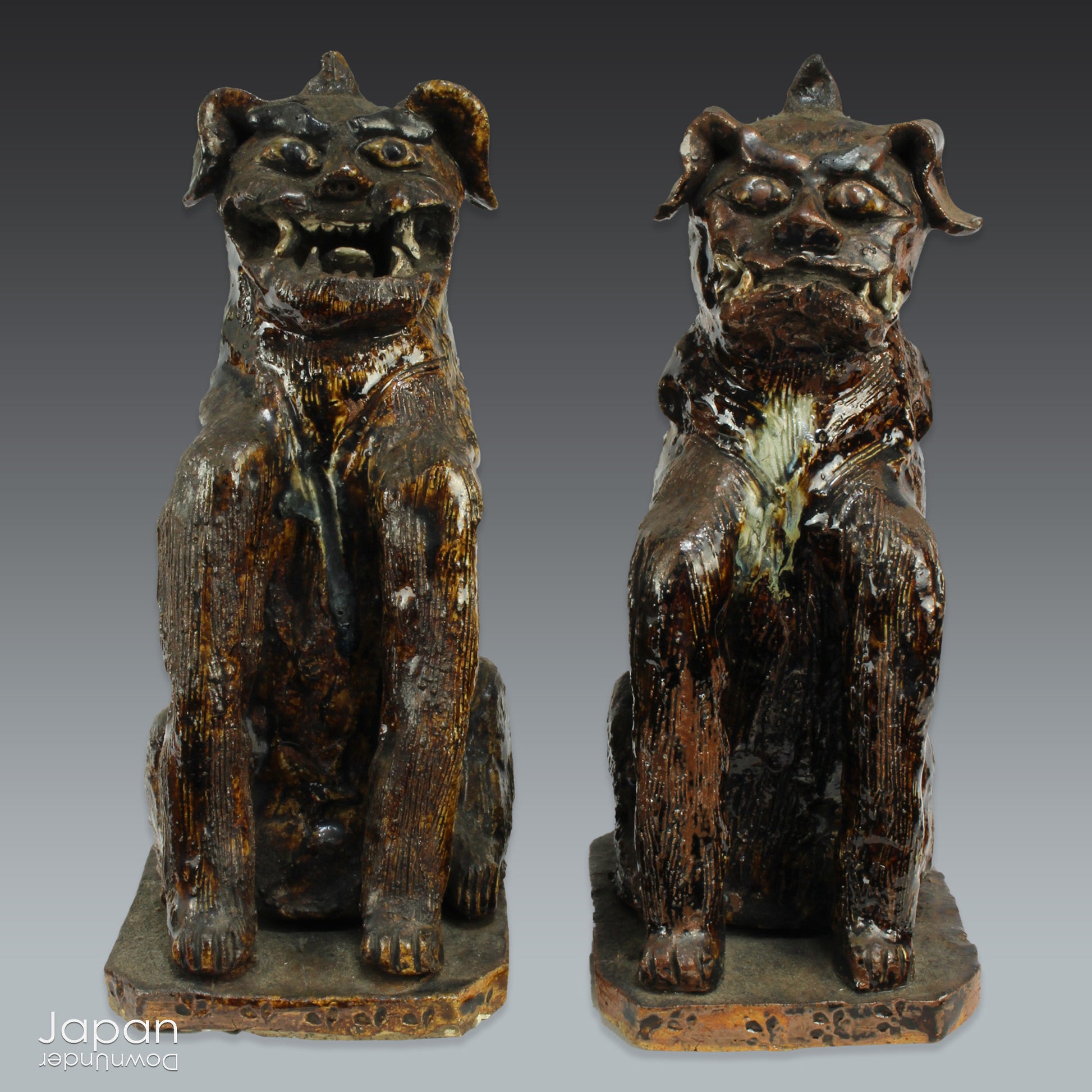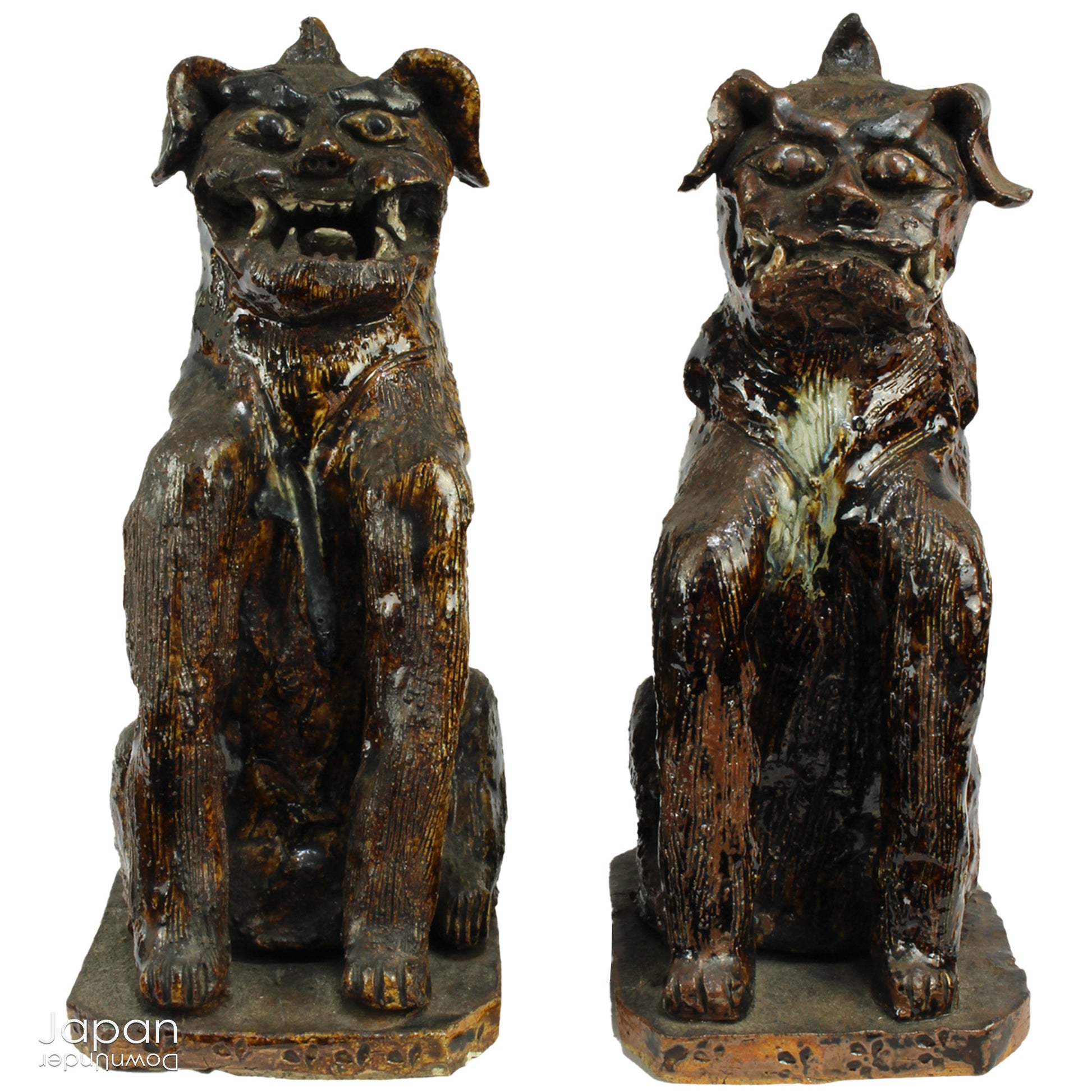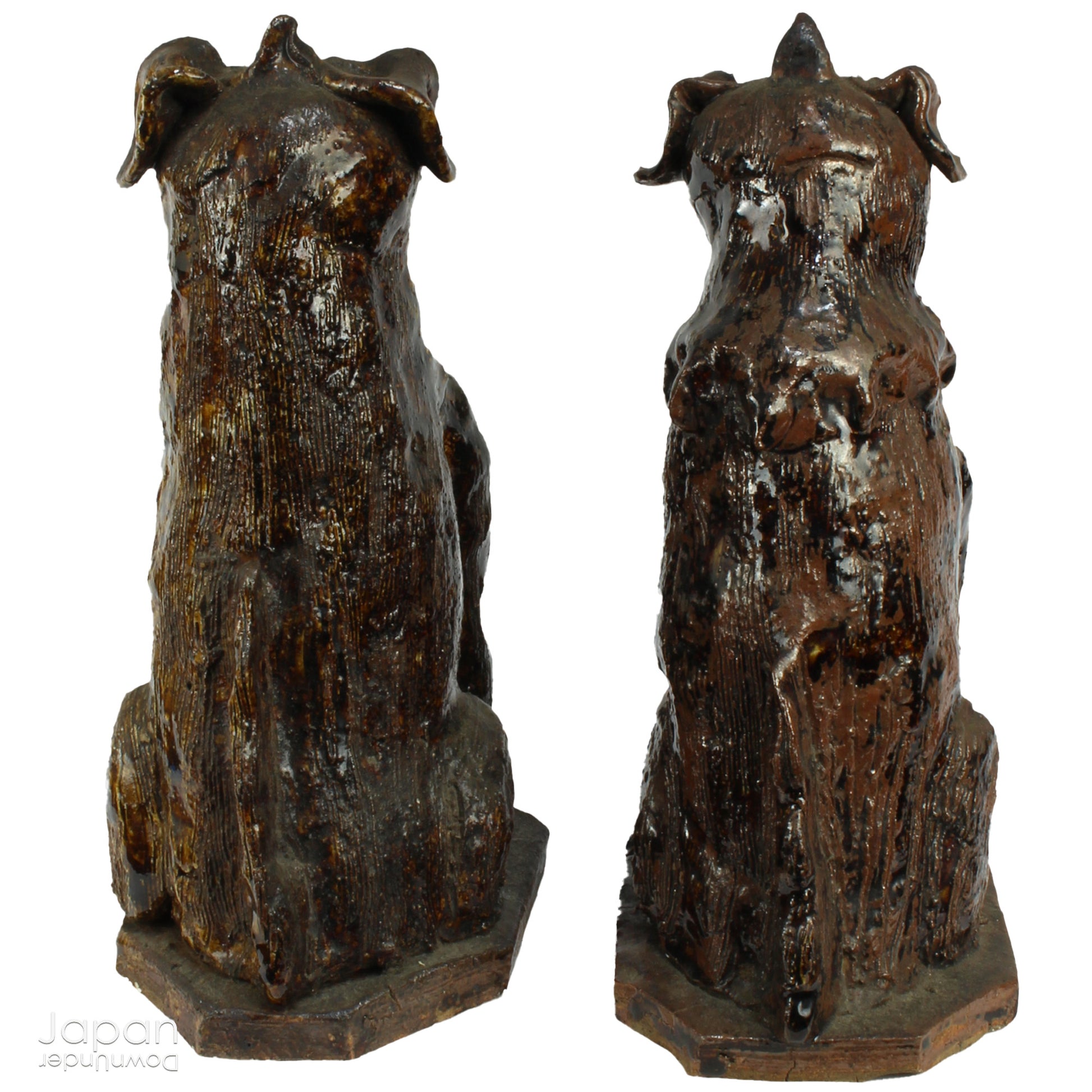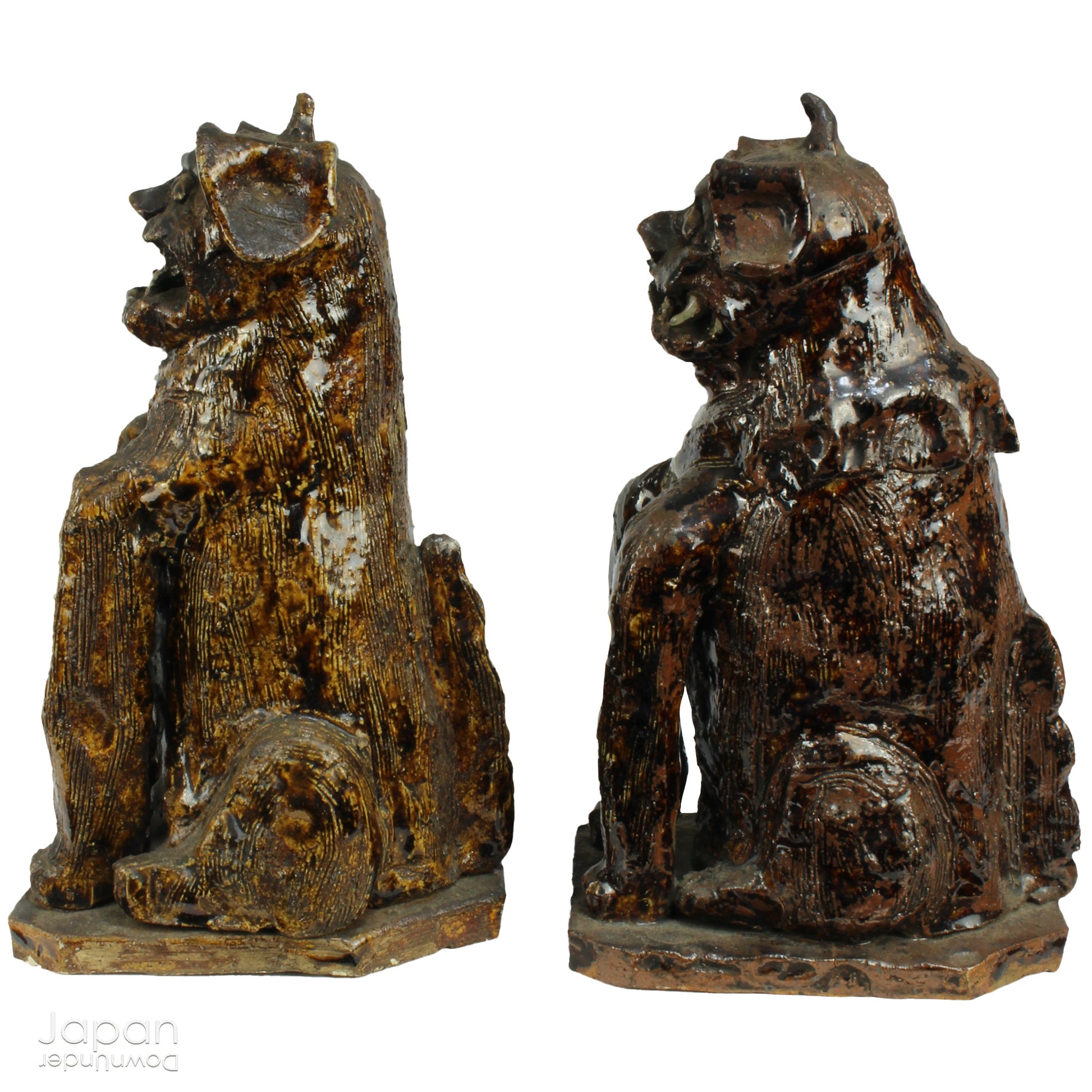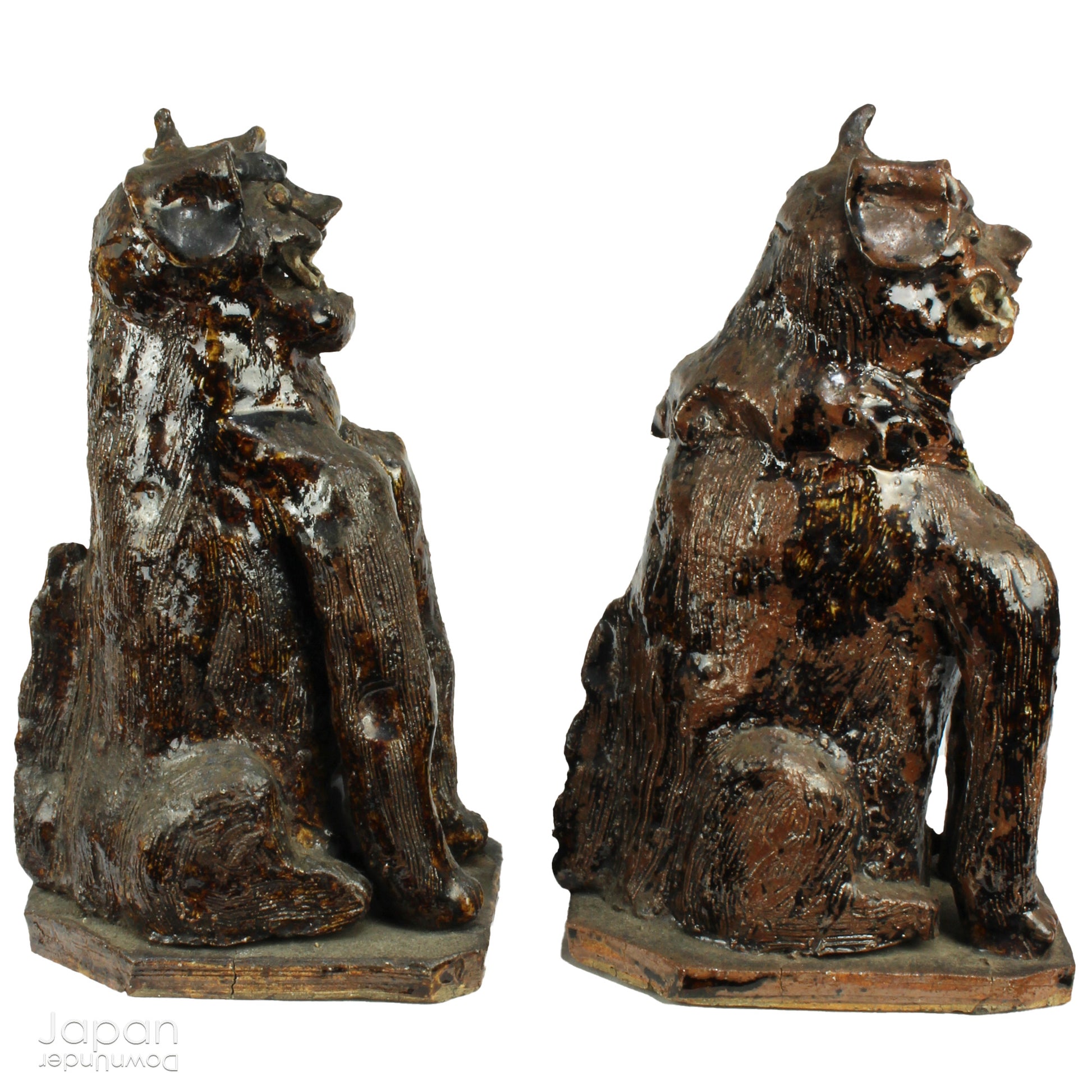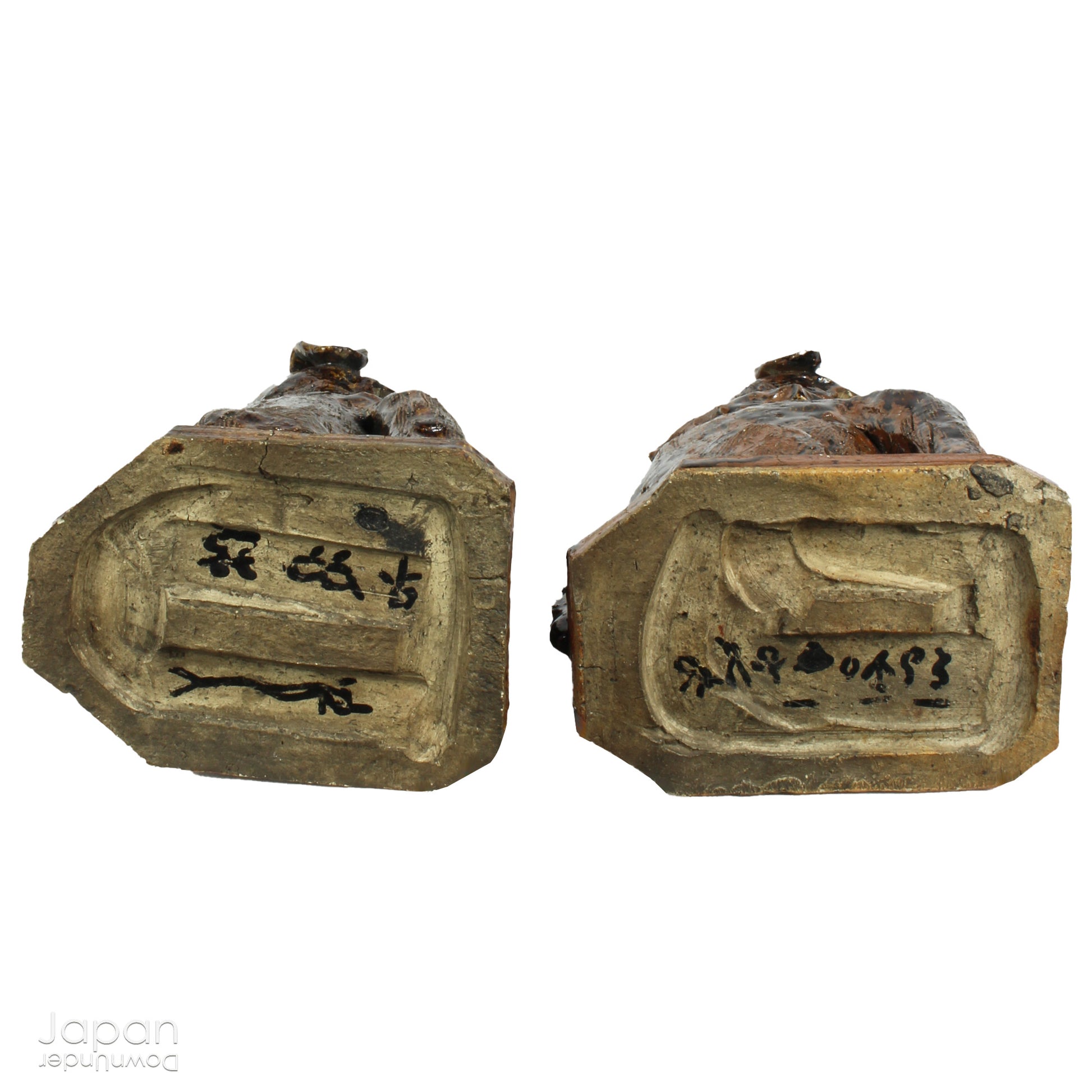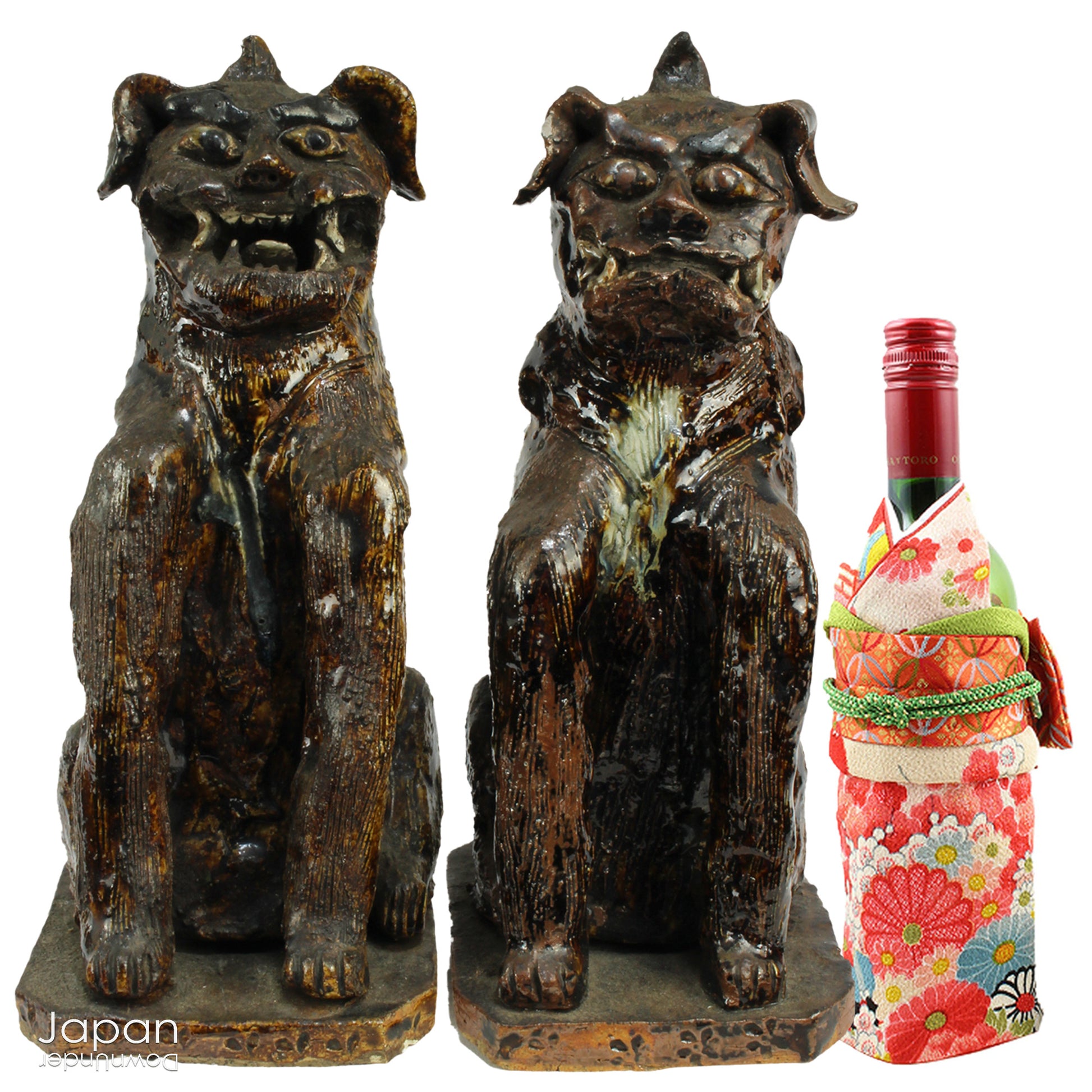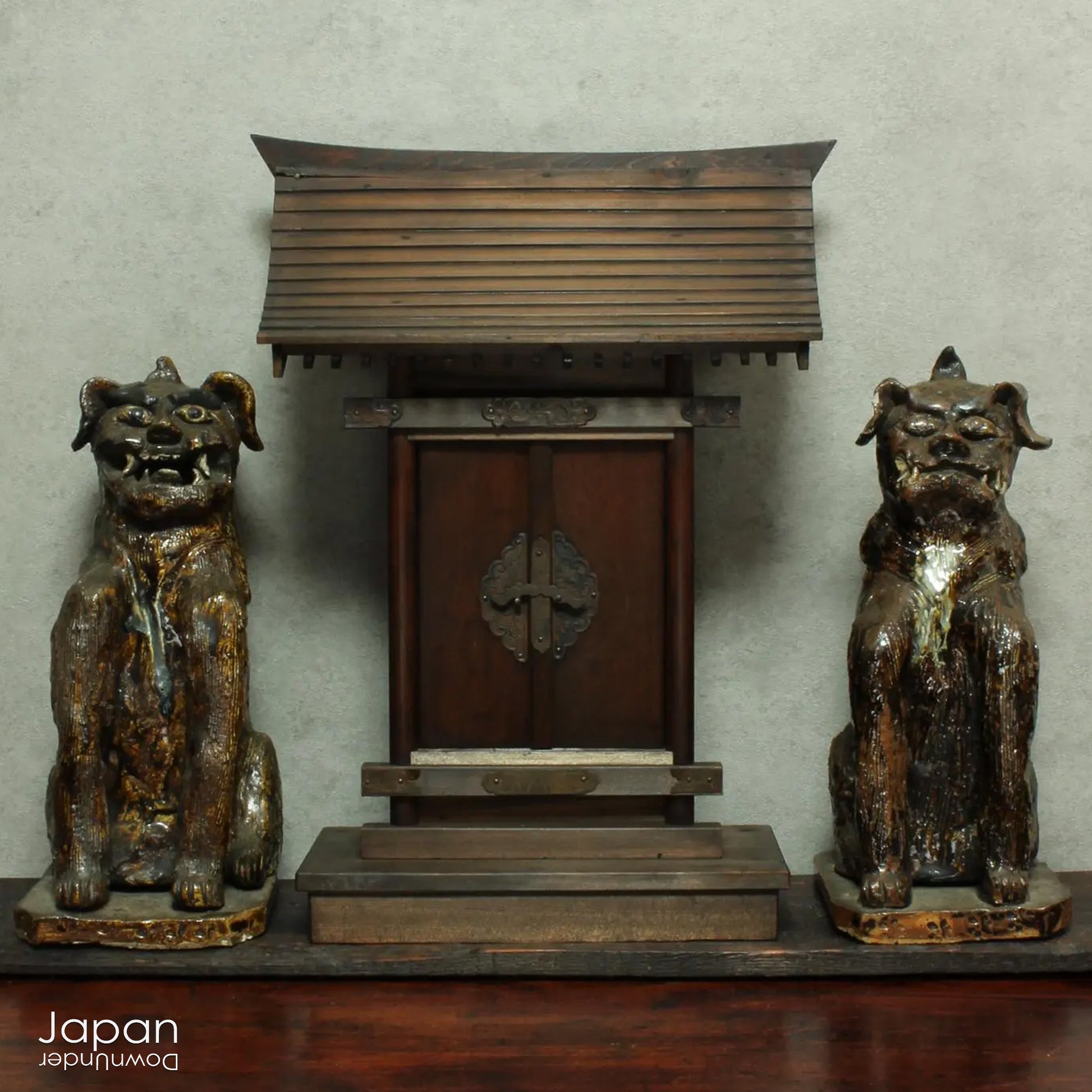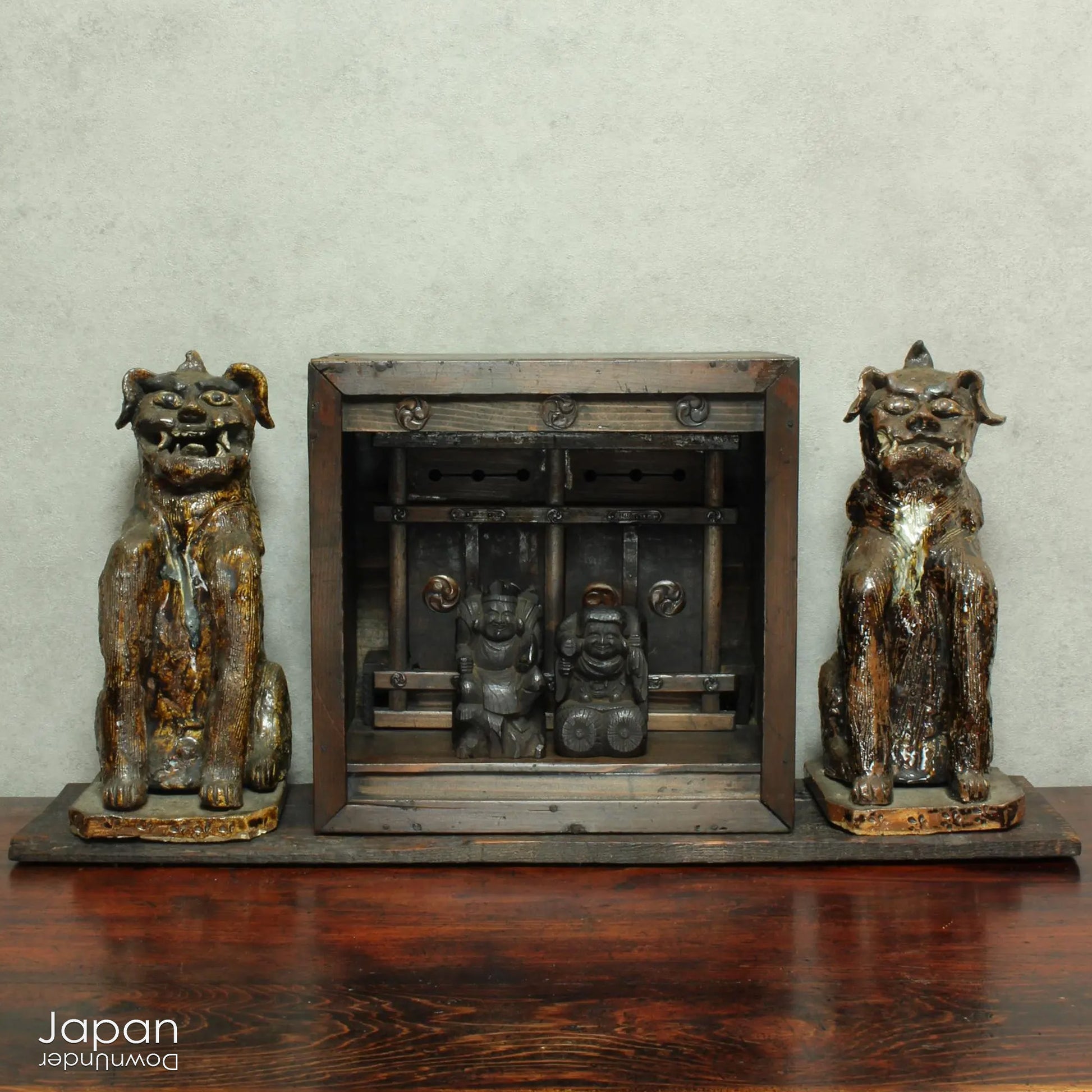JapanDownUnder
japanese antique lion dog pair - shinto shrine guardians
japanese antique lion dog pair - shinto shrine guardians
Couldn't load pickup availability
Love japanese Style Like We Do
An enchanting duo of antique stoneware lion dogs, known as komainu. Believed to ward off evil, these guardians stand watch at the entrance of Shinto shrines, and will add a touch of mystique to your decor. Handcrafted with intricate details, the lion dogs are sure to bring a sense of protection and tradition to your space.
These handcrafted clay statues are substantial, with a weight that conveys both their solidity and enduring presence. Their facial expressions are sculptured with fine attention to their mouth, teeth and tongue. The male has its mouth open and the female, her mouth closed. The open mouth is said to be forming the sound ‘a,’ while the closed mouth is forming the sound ‘un.’ Combined, they form the word a-un, the Japanese rendition of the Indian word om. Originating in Hinduism and adopted by Buddhism, om’s meaning is described as the name of God or the sound of the vibration of the universe. The male is also thought to be expelling evil from his open mouth and the female preventing good from escaping with her shut mouth.
Inspired by the lion dogs of Japan's Heian Era (794–1185), these figures feature distinctive horns atop their heads, adding to their majestic appearance. The pieces are glazed in a warm, tannish-brown hue, with a beautiful, deepened patina that has developed over time, especially on their faces and heads - evidence of their age and history.
These statues stand proudly on rectangular bases and are in good antique condition, with only minor wear consistent with their age. The bases are a little uneven, a natural result of the kiln process, which lends each piece a unique and rustic character, not interfering with their display.
A captivating pair, these lion dogs would make a striking addition to your collection, whether placed beside an antique shrine or as a standalone statement piece. Let these guardians bring both spiritual protection and timeless beauty to your home.
- measure around 39 cm (15.3”) tall x 12 cm (4.7”) across x 16 cm (6.3”) deep.
- weighs 5,220.
(listing for pair of lion dog statues)
SHIPPING INFORMATION
- please read our shipping notes in shipping policy.
- we use recycle packaging and wrap for safety, rather than appearance.
ABOUT OUR VINTAGE, ANTIQUE AND OTHER ITEMS
We list pieces we feel are worthy of display. There may be scratches, dents, fading and signs of wear and tear. We try to explain the condition of each item exactly, but may miss something.
Information regarding the item and it’s age is obtained from dealers and our personal research. We do our best to give you the correct information but please be aware that we cannot guarantee this information.
Please message us prior to purchase with any questions you may have about our products.
KOMAINU HISTORY
Komainu strongly resemble Chinese guardian lions and in fact originate from the Tang dynasty. The lion was believed to have the power to repel evil so was commonly used to guard gates and doors.
The Chinese guardian lions are said to have been influenced by lion depictions introduced through trade from the Middle East and India, countries where the lion existed and was a symbol of strength. The lion tradition was later exported to Korea, Japan, and Okinawa.
During the Nara period (710–794), as in the rest of Asia, the pair always consisted of two lions. Used only indoors until the 14th century, they were made mainly of wood. During the Heian period (794–1185), wooden or metal pairs were used as weights and door-stops, while at the Imperial Palace they were used to support folding screens.
The custom of displaying wooden, and later stone representations of the komainu and lions was established in the mid-Heian period (tenth century), when the form and naming of the lion statues changed slightly. One lion had its mouth open and was called shishi, meaning lion. The other had its mouth closed, looked rather like a dog and was called komainu. It sometimes had a single horn on its head. Gradually the animals again became identical, except for their mouths, and were finally called komainu.
From the Edo period (1603–1868) komainu were amulets placed either side of the shrine sandō (avenues of approach to the shrine). They were also used to protect Buddhist temples, royal palaces, nobility residences and private home entrances. Other animals, instead of the lion dogs, also started to be used as gate guards at this time, including wild boars, tigers, dragons and foxes.
Share
